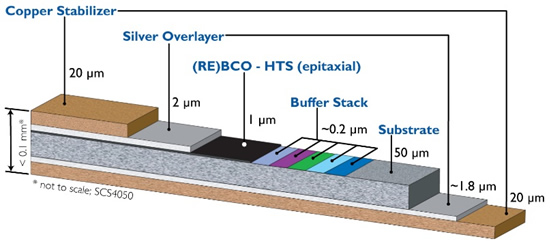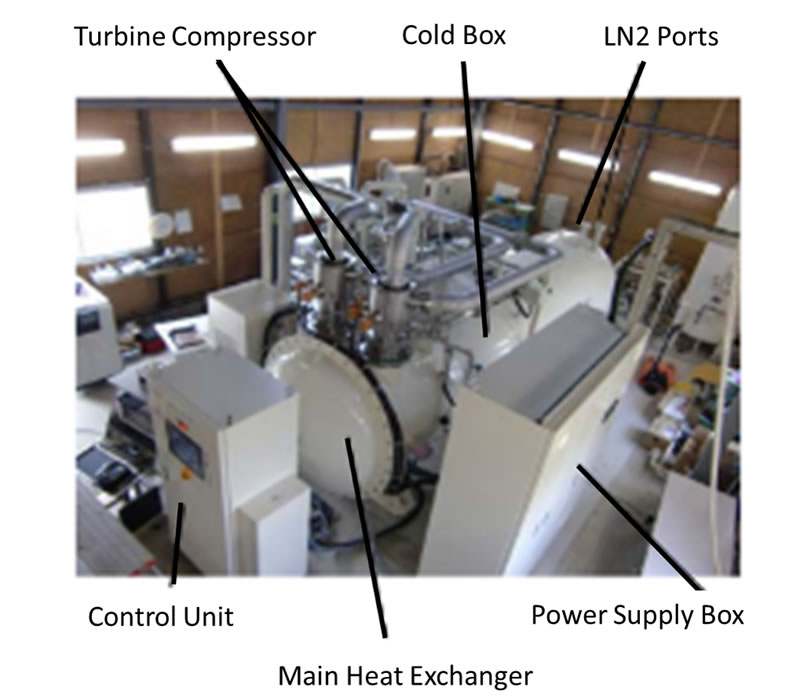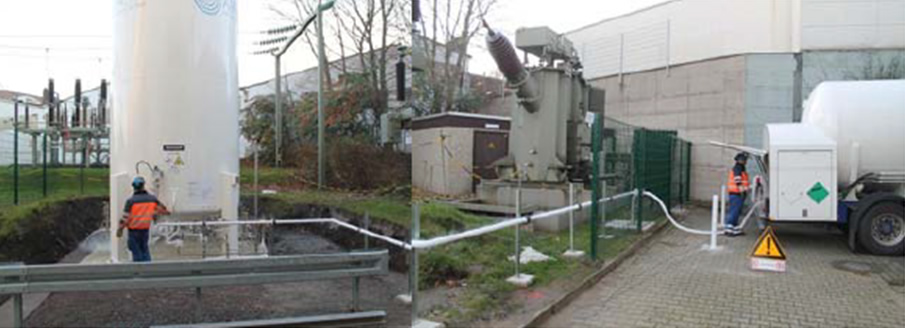Fundamental Technologies
Superconducting wire is the fundamental technology enabling an array of innovative devices. More than 15 companies are working actively to increase the total production capacity of HTS wire. Some companies can manufacture 1000 km/year of Bi2223, YBCO and MgB2 wire. Cost of the wire is recognized as a key factor for more widespread use in electric power applications; the current cost is around a few hundred $/kilo-amp-meter (kAm) (using critical current (Ic) at 77 K and self-field) for YBCO and should be reduced to around $10/kAm in 2030 for more widespread market adoption. The $10/kAm value coincides with the needs of application developers. MgB2 is now below $10-25/kAm (using Ic at 20 K and around 1 Tesla), but further cost reductions to <$5/kAm by 2020 are sought to enhance market competiveness. Bi2223 costs less than YBCO and aims to reduce the cost by half in 2020 and still lower in 2030. Many companies are conducting research and development to increase over long lengths Ic, which results in lower cost per kAm unit.

Microstructure of typical YBCO wire by Superpower. Courtesy of SuperPower.
Cryogenics
One of the critical components of HTS devices is the cryogenic system. These systems are used for HTS applications to operate at the temperature of liquid nitrogen (77 K or -196°C) and, in some cases, at a lower temperature (below 30 K or -243°C) for applications that involve high magnetic fields. There are several types of cryogenic systems available, including:
- The Gifford McMahon (GM) system, which is most widely used for LTS commercial products such as magnetic resonance imaging (MRI) machines. It has a relatively long maintenance free period of about 10,000 hours.
- Pulse-tube systems operate in a closed cycle, using helium as a working fluid, and have no moving parts. The cold is generated by the use of acoustic waves that substitute for the typical pistons or rotating equipment found in other cryocoolers.
- Stirling cycle cryocoolers have been available in commercial volumes for HTS electrical devices since 2000. The Stirling cryocooler uses gas bearings, a single piston and displacer, a combination of gas and mechanical springs, efficient heat exchangers, and a passive balancer used to minimize casing vibration. Stirling cryogenic systems are being developed for high cooling power (>1 kW at 77 K) and reliability using a closed cooling system with a compact design.
- Turbo Brayton systems are being developed for power applications. These systems are expected to reach the stage of mass production by 2025 and widespread market adoption in 2030. R&D is still needed to enhance performance, improve the interval time between maintenance, and lower system cost.

10 kW Turbo Brayton Refrigerator. Photo Courtesy of S. Yoshida, Taiyo Nippon Sanso
Other cryogenic systems are being applied, such as an open liquid nitrogen tank and circulation system for a cable and fault current limiter project in Essen Germany. An open system features lower complexity and potentially high reliability, but requires re-filling of a nitrogen storage tank in regular intervals. A closed system only needs electrical power supply after initial filling, but requires higher capital investment and specific methods to ensure availability and reliability.

Filling the liquid nitrogen tank at the Essen project. Photo Courtesy of RWE.
What's New
- HTS Readiness Map for Industrial Applications
- Annual Report 2022: IEA Technology Collaboration Programme on High-Temperature Superconductivity
- HTS Wire Enabling Market Disruption
- HTS Readiness Map for Energy Delivery Systems, Manuscript published at the Applied Superconductivity Conference 2022
- High Temperature Superconductivity Application Readiness Map for Energy Delivery (July 2021)
- Summary of High Temperature Superconductivity Readiness Map
- Collaboration with TCP Wind
- Energy Efficiency, Resilient Electric Systems, and Transportation Applications Using High-Temperature Superconductivity
- Visualize the World’s HTS Projects
- Collaboration with other IEA TCPs
- Learn how the HTS TCP is fostering the young generation of scientists
- Interested in Membership?
Events
- HTS TCP 18-20 September 2023, Geneva, Switzerland, ExCo Meeting
- IEEE CSC Events Calendar
Historical Newsletters
- HTS Newsletter: Summer 2019
- HTS Newsletter: Fall 2017
- HTS Newsletter: Winter 2017
- HTS Newsletter: Fall 2016
